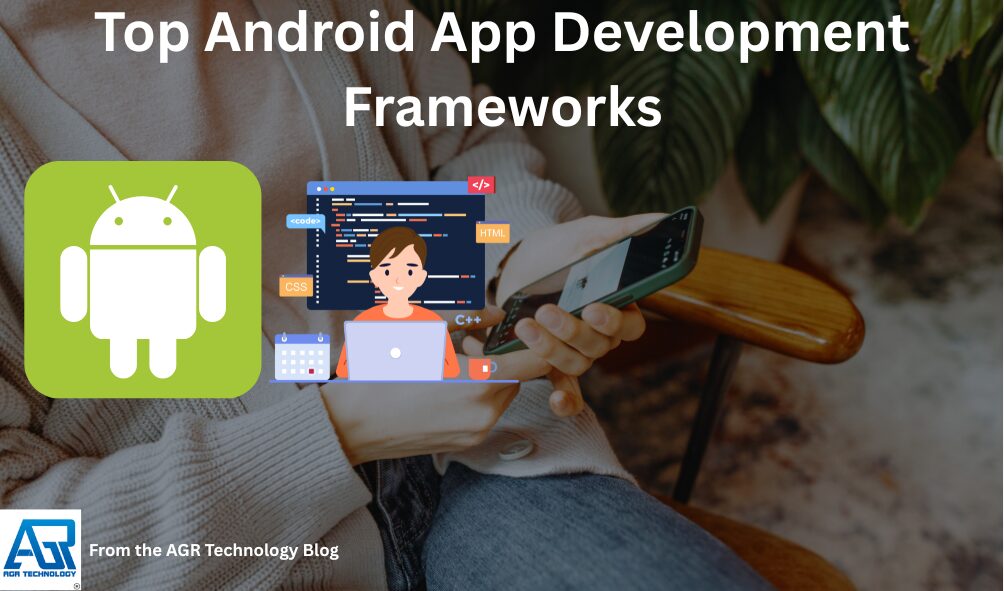Choosing the right framework can make or break an Android app project. With over ten major frameworks available, developers must weigh their options carefully to match their app’s needs and features. The decision isn’t just about cost—open-source frameworks appeal to solo developers, while paid options often attract larger teams and companies looking for advanced support.
Recent surveys show that Flutter leads the pack, with 46% of developers choosing it, followed by React Native at 38%. Other popular options like Ionic, Cordova, Unity, and Xamarin each hold a significant share of the market. Each framework offers unique strengths, from rapid prototyping to deep customization and access to device hardware. Understanding what sets these frameworks apart is crucial for anyone aiming to build efficient, high-quality Android apps in today’s competitive landscape.
Understanding Android App Development Frameworks

Android app development frameworks provide structured environments with ready-to-use tools, libraries, and components. These frameworks standardize processes, enabling efficient and consistent development across diverse app projects.
Key Benefits and Features
- Efficiency and Speed: Frameworks expedite Android app creation by offering prebuilt modules, code templates, and best practices. For example, Flutter uses customizable widgets and hot reload features, enabling rapid iteration and UI development.
- Cross-Platform Capabilities: Many frameworks, such as React Native and Apache Cordova, let developers write a single codebase for deployment on Android and other operating systems, reducing overall development time and maintenance.
- Device Compatibility: Standardized components and built-in testing tools help ensure that apps function reliably on different devices and Android versions. This compatibility improves user experiences across varied hardware.
- Extensibility and Customization: Developers gain flexibility to create custom features, sophisticated animations, and advanced UI, as frameworks grant direct access to key Android platform components.
- Community and Documentation: Established frameworks maintain strong community support, providing extensive documentation, shared libraries, and issue resolution channels that assist new and experienced developers.
Types of Android App Development Frameworks

Android app development frameworks fall into distinct categories based on their approach and codebase reusability. These types impact coding language choices, platform compatibility, and features available for developers.
Native Frameworks
Native frameworks support the creation of Android apps using languages such as Java, Kotlin, C, or C++. These frameworks provide direct access to Android’s native APIs and hardware features, delivering top performance and device integration.
- Android SDK enables app development with Java or Kotlin and integrates seamlessly with Android Studio.
- Android NDK allows developers to implement performance-critical code using C or C++ and access native libraries.
Native frameworks deliver optimal speed and platform-specific UI/UX, as seen in banking, streaming, or AR apps.
Cross-Platform and Hybrid Frameworks
Cross-platform and hybrid frameworks allow developers to use a single codebase across Android, iOS, and sometimes desktop or web platforms.
- Cross-Platform Frameworks such as Flutter (using Dart), React Native (using JavaScript), Xamarin (.NET/C#), and Kotlin Multiplatform enable shared business logic and user interfaces. For example, Flutter and React Native hold 46% and 38% usage among developers, respectively (Statista, 2021).
- Hybrid Frameworks like Ionic, NativeScript, and Apache Cordova use web technologies—HTML5, JavaScript, CSS3—with wrappers like WebView to deliver apps across Android and iOS. Cordova and Ionic each have about 16% market share.
These frameworks offer cost and time efficiencies by compiling or running the app on multiple platforms, benefiting startups and large teams targeting wider audiences. Hybrid frameworks provide easier access to web developer skills, while cross-platform tools generally offer better performance and access to native APIs.
Top Android App Development Frameworks
Several Android app development frameworks stand out for their technology, flexibility, and strong developer adoption. Each leading framework offers distinctive advantages that align with specific project requirements and business goals.
Overview of Leading Frameworks
- Flutter: Google’s Flutter enables cross-platform development from a single codebase using Dart. Enterprises like Alibaba, Tencent, and Google Ads use Flutter for apps demanding consistent UI across devices.
- React Native: Developed by Facebook, React Native uses JavaScript and React to build native-like apps for Android, iOS, and web. Airbnb and Discord deploy React Native to combine rapid development with native performance.
- Xamarin: Microsoft’s Xamarin leverages C# and .NET for cross-platform apps, typically used by enterprises with existing Microsoft tech stacks. Pinterest and The World Bank rely on Xamarin for apps covering Android, iOS, and UWP.
- Ionic: Built on Angular and Cordova, Ionic supports hybrid development with HTML, CSS, and JavaScript, attracting teams seeking quick prototypes and web-like experiences on mobile.
- Apache Cordova (PhoneGap): This open-source framework turns web apps into native apps using JavaScript, HTML5, and CSS3, ideal for projects requiring broad platform compatibility with minimal code changes.
- Kotlin Multiplatform: JetBrains’ Kotlin Multiplatform shares business logic across Android, iOS, and desktop, retaining native UI. Organizations use it to optimize logic sharing while achieving strong performance.
Notable Features and Use Cases
| Framework | Key Features | Example Apps | Primary Use Case |
|---|---|---|---|
| Flutter | Hot reload, rich widgets, fast native compilation | Google Ads, Alibaba | Unified UI for cross-platform apps |
| React Native | Native modules, single JS codebase, live reload | Airbnb, Discord | Native-like experience with shared business logic |
| Xamarin | Native API access, .NET integration, code sharing | Pinterest, World Bank | Enterprise-grade apps on Android, iOS, and Windows |
| Ionic | Reusable UI components, web tech stack, fast prototyping | MarketWatch, Sworkit | Web-like cross-platform mobile experiences |
| Apache Cordova | Plugin system for device APIs, hybrid deployment | Wikipedia, Untappd | Apps needing rapid rollout on multiple platforms |
| Kotlin Multiplatform | Shared business logic, platform UI independence | Philips, Netflix | Logic sharing with native UIs for robust performance |
Flutter’s hot reload and customizable widgets support rapid UI iteration and consistent cross-platform experiences. React Native’s auto-updating native components and JavaScript foundation provide scalability for large user bases demanding native performance. Xamarin integrates tightly with the .NET toolchain, facilitating code sharing in Microsoft-centric environments. Ionic and Cordova lower time-to-market and ensure device feature access through plugins, though they may not always match native speed. Kotlin Multiplatform balances maximum code reuse and true native UI, meeting enterprise demands for modular yet high-performance apps.
These frameworks offer developers and teams efficient, stable, and scalable solutions tailored to a wide range of Android app requirements.
How to Select the Right Framework for Your Project
Choosing the best Android app development framework directly impacts project success and development efficiency. Selection depends on technical requirements, team skills, and intended outcomes.
Factors to Consider
Framework selection for Android projects relies on evaluating core attributes and constraints:
- Cross-Platform Compatibility: Frameworks like Flutter, React Native, Xamarin, and Ionic enable deployment on Android, iOS, and web from a single codebase. Projects targeting multiple platforms need these capabilities.
- Performance: React Native and Flutter provide near-native performance, making them suitable for resource-intensive applications. Hybrid solutions (Cordova, Ionic) can introduce trade-offs in speed and responsiveness.
- Development Time and Cost: Flutter and React Native feature hot reload and reusable components, shortening timelines and reducing costs. Xamarin and Ionic streamline processes if teams have .NET or web skills.
- Learning Curve: React Native and Ionic suit teams familiar with JavaScript, while Xamarin aligns with C# experience. Flutter needs Dart proficiency but offers comprehensive documentation.
- Community and Support: Large, active communities support Flutter and React Native. Xamarin benefits from Microsoft’s resources. Ionic and Cordova leverage broad plugin ecosystems due to long market presence.
- Stability and Maintenance: Frameworks with regular updates and strong community engagement reduce long-term maintenance risks.
Matching Frameworks to Project Needs
Framework suitability depends on specific use cases:
- Native Performance and UI: Flutter and React Native address apps needing high performance and interactive interfaces. Xamarin serves enterprise projects requiring in-depth native API integrations, especially in the Microsoft ecosystem.
- Hybrid App Development: Cordova and Ionic facilitate multi-platform deployment using web technologies for simpler, content-driven apps.
- Rapid Development: Projects demanding quick deployment and iteration benefit from Flutter’s and React Native’s fast development cycles.
- Enterprise Applications: Xamarin stands out for integration with .NET and legacy C# systems, supporting scalable enterprise solutions.
- Skill and Experience Alignment: Framework adoption efficiency increases when the selected tool aligns with the existing skills of the development team.
| Framework | Ideal Use Case | Skill Set | Cross-Platform | Popularity (%) | Performance |
|---|---|---|---|---|---|
| Flutter | Complex UI, rapid development | Dart | Yes | 46 | Near-native |
| React Native | High performance, quick updates | JavaScript | Yes | 38 | Near-native |
| Xamarin | Enterprise, API deep integration | C# (.NET) | Yes | 11 | Native |
| Ionic | Web-driven, hybrid apps | JavaScript/Angular | Yes | 16 | Hybrid |
| Cordova | Basic hybrid, MVPs | JavaScript/HTML5 | Yes | 16 | Hybrid |
Project alignment with these considerations leads to more maintainable, efficient, and scalable Android applications.
Key Takeaways
- Choosing the right Android app development framework is crucial for project success, impacting performance, scalability, and cost.
- Flutter and React Native are the top choices for cross-platform development, offering rapid iteration, near-native performance, and large community support.
- Xamarin, Ionic, Cordova, and Kotlin Multiplatform provide powerful alternatives, each catering to specific needs like enterprise integration, rapid prototyping, or native UI performance.
- Framework selection should align with project requirements, team expertise, intended platforms, and maintenance needs for optimal results.
- Leveraging frameworks with robust documentation and active communities ensures smoother development and long-term stability for Android apps.
Conclusion
Choosing the right Android app development framework shapes the entire project journey and its long-term success. Developers who stay updated with the latest tools and trends can deliver more robust and future-proof apps.
By carefully weighing project needs against framework features and team expertise, organizations and solo developers alike can unlock greater efficiency and quality in their Android app development efforts. The right framework isn’t just about technology—it’s about setting the foundation for innovation and growth.
Frequently Asked Questions
What is an Android app development framework?
An Android app development framework is a platform that provides developers with prebuilt libraries, tools, and components to simplify and speed up the creation of Android apps. It standardizes development, allowing for efficient coding and easier maintenance.
Which framework is most popular for Android app development?
Flutter is currently the most popular framework for Android app development, according to recent surveys. It is followed closely by React Native, with other options like Ionic, Cordova, Xamarin, and Unity also in use.
What are the main benefits of using frameworks for Android app development?
Frameworks increase efficiency and speed by offering reusable code modules, cross-platform compatibility, improved device support, extensibility for custom features, and access to extensive documentation and community support.
How do native and cross-platform frameworks differ?
Native frameworks use platform-specific languages like Java or Kotlin, providing optimal performance and device integration. Cross-platform frameworks, such as Flutter and React Native, allow one codebase for multiple platforms, saving time and costs.
Which framework is best for building high-performance Android apps?
For high-performance Android apps, Flutter and React Native are top choices. Both deliver near-native performance, rich user interfaces, and are supported by strong communities and frequent updates.
Is there a framework that lets me reuse code for both Android and iOS?
Yes, cross-platform frameworks like Flutter, React Native, Ionic, and Xamarin allow you to write one codebase that runs on both Android and iOS, making development more efficient and cost-effective.
Why do some developers prefer open-source frameworks?
Open-source frameworks are attractive because they are free, customizable, and supported by active communities, which helps solo developers and small teams reduce costs and find support easily.
What factors should I consider when choosing an Android app development framework?
Consider cross-platform compatibility, app performance needs, development time and cost, the learning curve, available community support, and how well the framework matches your team’s skills and project requirements.
Which frameworks are ideal for enterprise Android app development?
Xamarin is often used in enterprise settings due to its .NET integration and security features, while Flutter and React Native are also suitable for scalable, high-performance business apps.
Can I add custom features and animations with Android development frameworks?
Yes, most modern frameworks support extensibility, allowing you to add custom features, complex animations, and unique UIs to enhance user experience according to your app’s needs.
Related pages:
Customised Software Development Services for companies in Australia & internationally
Software Development for medical companies
App Development Services Melbourne
Source(s) cited:
“Cross-platform mobile frameworks used by global developers 2023| Statista” 11 Feb. 2025, www.statista.com/statistics/869224/worldwide-software-developer-working-hours/. Accessed 27 Apr. 2025.
Singh, Vikas. “React Native vs Flutter: Which One is Better for Your App in 2025?” DEV Community, 1 Apr. 2025, dev.to/brilworks/react-native-vs-flutter-which-one-is-better-for-your-app-in-2025-4j23. Accessed 27 Apr. 2025.

Alessio Rigoli is the founder of AGR Technology and got his start working in the IT space originally in Education and then in the private sector helping businesses in various industries. Alessio maintains the blog and is interested in a number of different topics emerging and current such as Digital marketing, Software development, Cryptocurrency/Blockchain, Cyber security, Linux and more.
Alessio Rigoli, AGR Technology
![logo-new-23[1] logo-new-23[1]](https://agrtech.com.au/wp-content/uploads/elementor/thumbs/logo-new-231-qad2sqbr9f0wlvza81xod18hkirbk9apc0elfhpco4.png)
